Studs for Grip in Extreme Situations
go to the online shopThese studs for grip in extreme situations are only suitable for our Straight Bar Horseshoes with a stable metal bar. They cannot be used in the threaded inserts of the horseshoes with pure plastic bar.
The Right Choice For a Regular Stud Change
For riding disciplines in which the horseshoe is exposed to extreme strain, we have models with
particularly stable thread inserts in our range.
These horseshoe models all have a metal core with a stable bar
similar to a Straight Bar Shoe. The threaded inserts of these horseshoes are firmly attached to the metal core, making them much
more stable than the threaded inserts of the models with a pure plastic bar.
The Special Features of the Stable Threaded Inserts:
- It is possible to use slightly higher studs without the risk of levering the threaded inserts out of their correct and stable position also under extreme loads.
- They are suitable for regularly turning the studs out and in.
- When screwed in, the stud sinks into the thread for about 3 mm. That way, the first pitch of the screw thread won't be damaged even during abrasion and the thread will be easier to clean. Using the 8mm studs as an example, this means that the effective height is 5mm
- The thread size varies depending on the size of the horseshoe.
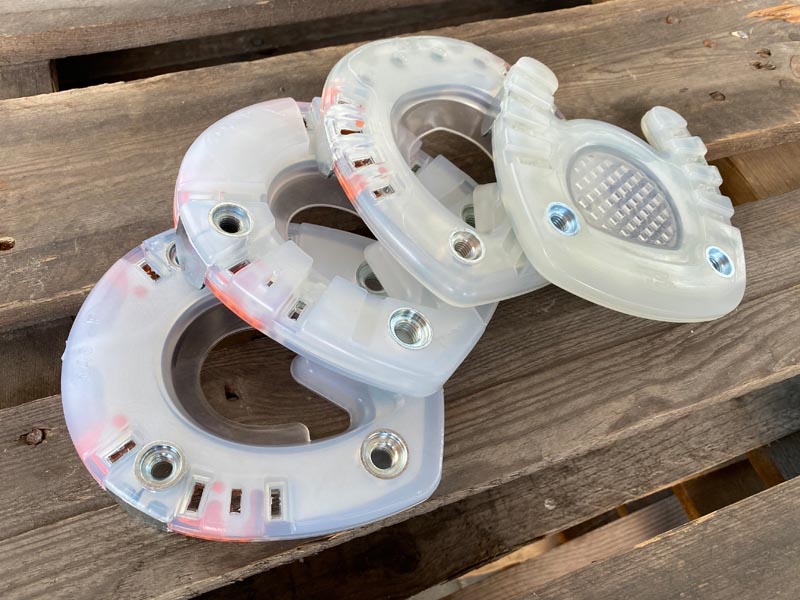

Quality Made in Germany
What applies to our horseshoes also applies to our studs - they are "Made in Germany"; they are produced in our own factory in the Bavarian Forest.
They are then hardened for better durability.
Stollen for Grip in Extreme Situations – Pictures

Hexagonal studs for extreme loads without self-tapping thread. When using these studs a regular stud change is possible, but not as easy as with the self-tapping version.

The hexagonal studs without self-tapping thread are available in 6mm, 8mm and 12mm in thread sizes M8, M10, M12 and M14. Our conical "Ice" studs are only available in a self-tapping version.

Regardless of whether you use the hexagonal or the conical "Ice" stud - the studs sink into the thread by approx. 3mm when screwed in. The actual height is therefore somewhat lower.

Studs for extreme loads with self-tapping thread for easier stud change.
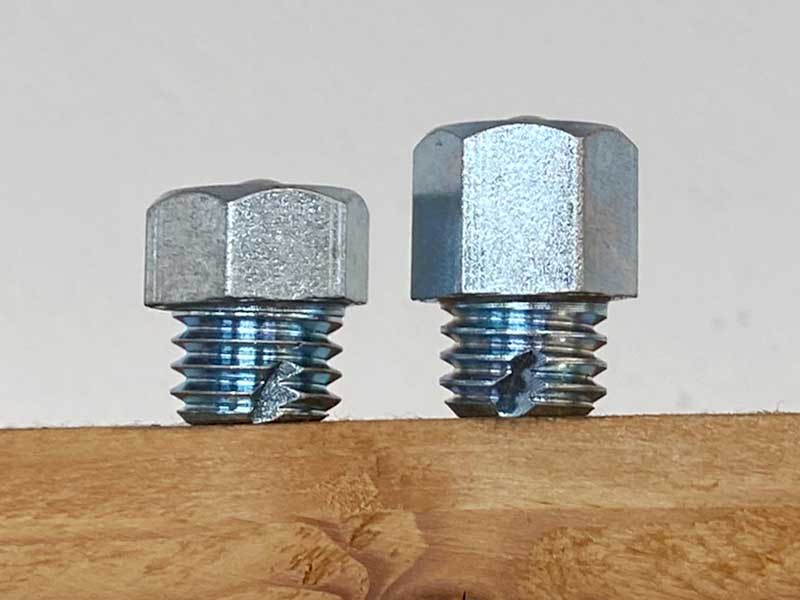
The hexagonal studs with self-tapping thread are available in 8mm and 12mm in thread sizes M8, M10, M12 and M14.
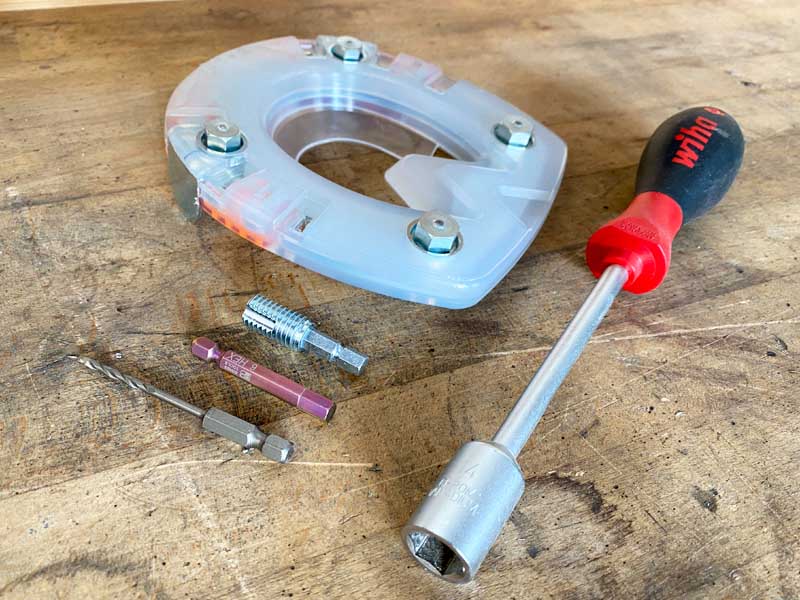
You can buy all the bit inserts and wrenches you need for stud replacement from us.
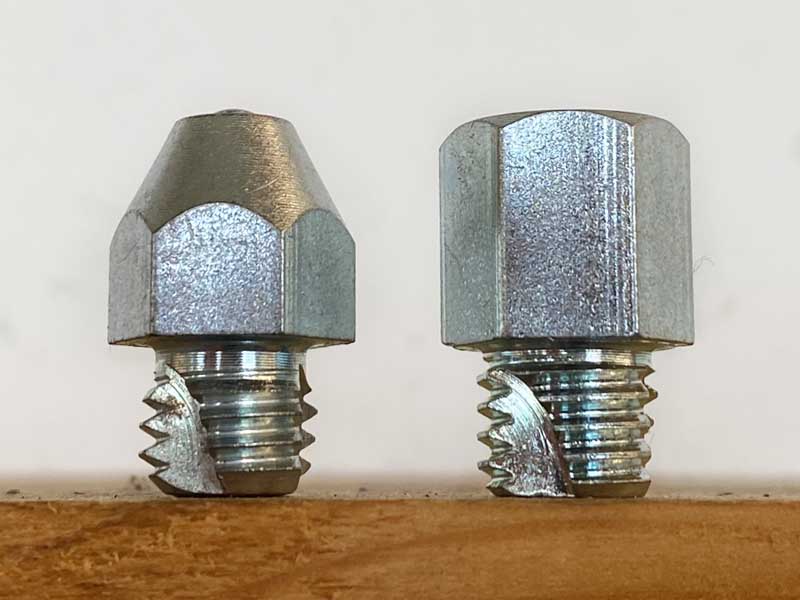
Our studs for extreme loads are available as hexagonal studs and conical studs. The conical studs are called "Ice" studs.

The selection of our "Ice" studs at a glance. They are currently available as 12mm and 14mm studs in M8, M10 and M12.

The call for a new, more conical stud shape originally came from Canada, where sometimes mirror-smooth, icy floors require more aggressive stud versions.
Application and Safety Instructions for the Use of Studs
The use of studs increases the risk of injury, in the herd as well as for the horse itself. Any use of studs and their monitoring during use is the responsibility of the horse owner in co-operation with the farrier.
The Precise Fit of the Hoof Protection and the Correct Position of the Stud on the Hoof
The stud can only be used properly and protect the horse from slipping, without causing major damage at the same time, if it is placed correctly on the hoof.
The correct shape and size of the composite horseshoe, as well as the correct fit to the hoof are crucial, especially when using studs. This is the only way to ensure that the thread is in the correct position in the heel area, thus preventing injuries.
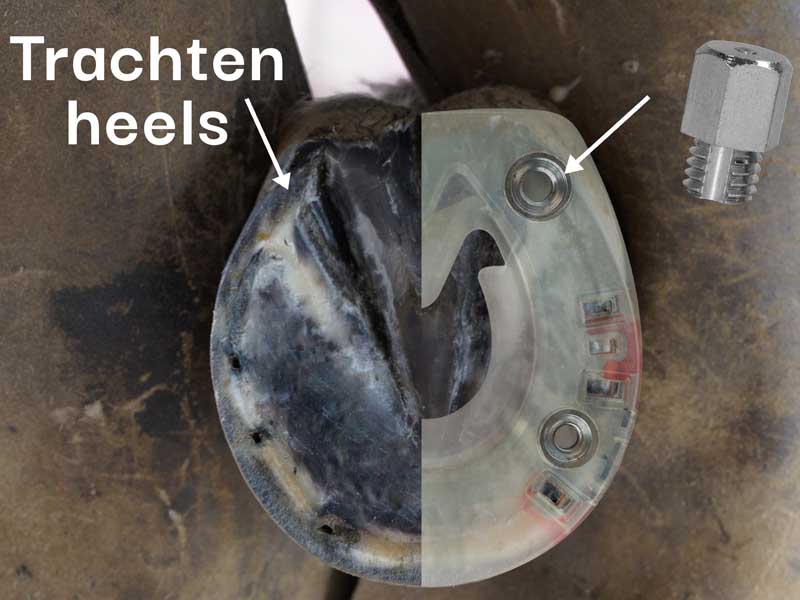
There are Some Important Aspects to Consider When Using Studs
-
The Horse's Health
For the horse's health, it is usually best to use higher studs only when they are needed, for example, in training. It is precisely for this regular stud change that these studs and matching horseshoes with stable threaded inserts have been developed. This makes sense, because every time you use studs, you have to consider that there is a certain interaction. Studs protect the horse from possible slipping and offer better grip - but on the other hand, they put a strain on the horse's locomotor system, especially on harder grounds.
In our opinion, if the ground is hard and the stud cannot sink in, higher studs should only be used when necessary. Leaving the studs permanently in the horseshoe e.g. during the time on the paved paddock or in the box can have a negative effect on the health of the horse, the stability of the shoe and last but not least the safety in a herd situation.
-
The Risk of Injury in a Herd Situation
Of course, under certain circumstances, it is also possible to use the studs permanently in combination with our threadened straight bar shoes. If you decide to do so, please note that studs increase the risk of injury in a herd situation. In many open stables the use of studs is prohibited. We therefore recommend that you always discuss the use of studs with the stable owner or/and the other horse owners.
-
The Correct Stud Height for the Intended Application
Select the proper stud height depending on the intended use of your horse. If you plan to leave the studs in the shoe permanently, you should also consider the ground conditions. In our opinion, the 12mm and 14mm studs should only be kept permanently in the shoe if the ground conditions allow it, e.g. if there is an appropriate snow cover.
-
The Regular Inspection of Horseshoes and Studs
In addition to regular inspection of the proper fit and soundness of the horseshoe and quarter clips, you should always check the threaded inserts and studs.
-
Two Shapes of Studs
Our studs for extreme loads are available in two shapes - both shapes can be screwed in with hexagonal wrenches.
The conical shape of our studs was developed in collaboration with our partner in Canada with a view to use during the winter. This is the reason for the name "Ice" studs. Of course, there is nothing to stop you from using them as grass studs, for example, if your horse is comfortable with them. However, we would not recommend these pointed studs on hard ground such as asphalt.
-
Self-Tapping vs. Non-Self-Tapping
Both the self-tapping and the not-self-tapping studs are suitable for regular stud changes. However, the self-tapping design makes the change much easier.
If you decide to use studs, read and follow our safety instructions to avoid injury. You can also find more information about the use of studs in the respective article descriptions of the relevant horseshoes.
Step by Step Guide to Change Studs
Especially with higher studs, it makes sense to remove the stud during the non-training period. To keep the threads clean during this time, we recommend the use of so-called blind studs. Both stud blanks and our plastic plugs are suitable as blind studs. You can buy both types of blind studs in our store.
Using Stud Blanks as Placeholder
1
Clean the hole of the stud blank using a masonry drill bit.

2
Unscrew the stud blank from the thread insert using a suitable bit.

3
If there is still dirt in the thread hole, you can easily remove it with our stud hole
cleaner.
If you use a stud with a self-tapping thread, this step is usually not necessary.
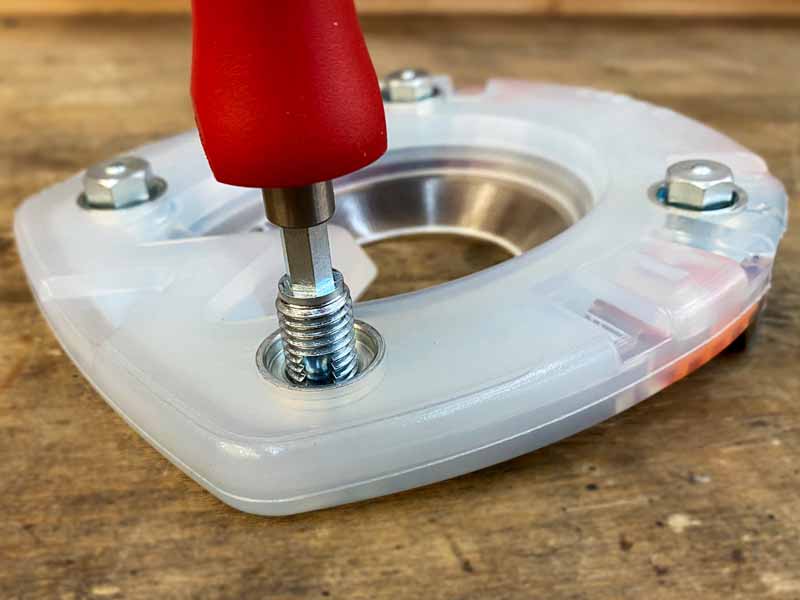
4
Screw the selected stud into the threaded hole using the appropriate hexagonal wrench.
It is best to first screw the stud into the stud hole by hand until it has a firm hold in the
thread. You can then tighten it as usual with the hexagonal wrench.
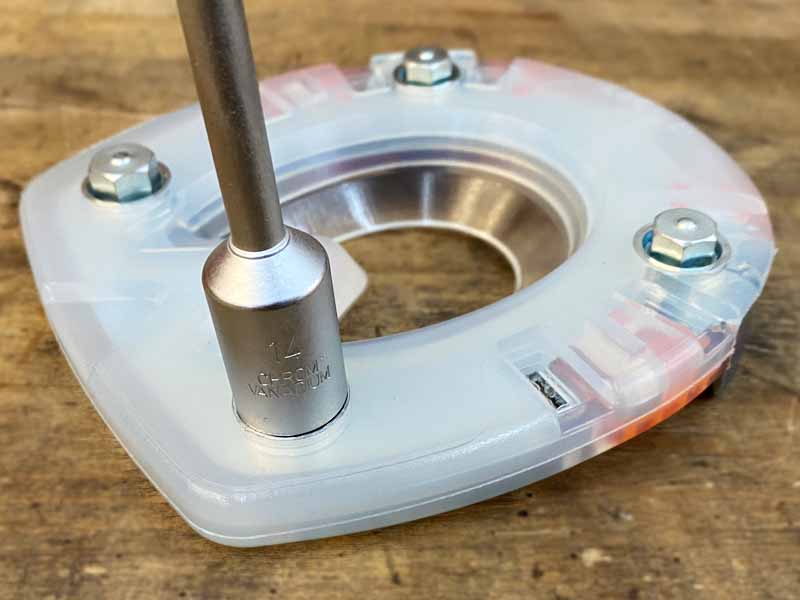
5
Done! After training, you can unscrew the studs again and screw in the stud blanks again until the next use of the studs.
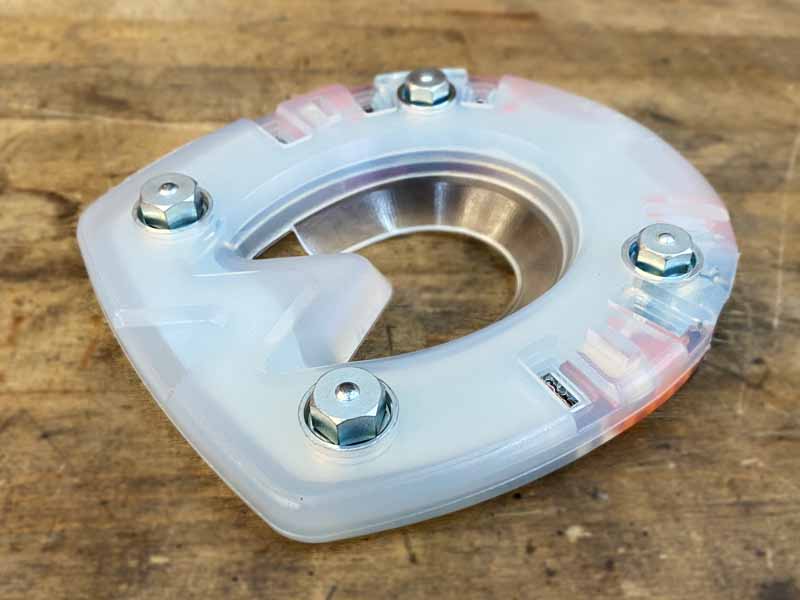
Using Plastic Plugs as Placeholder
1
Turn or press the plug into the thread insert.
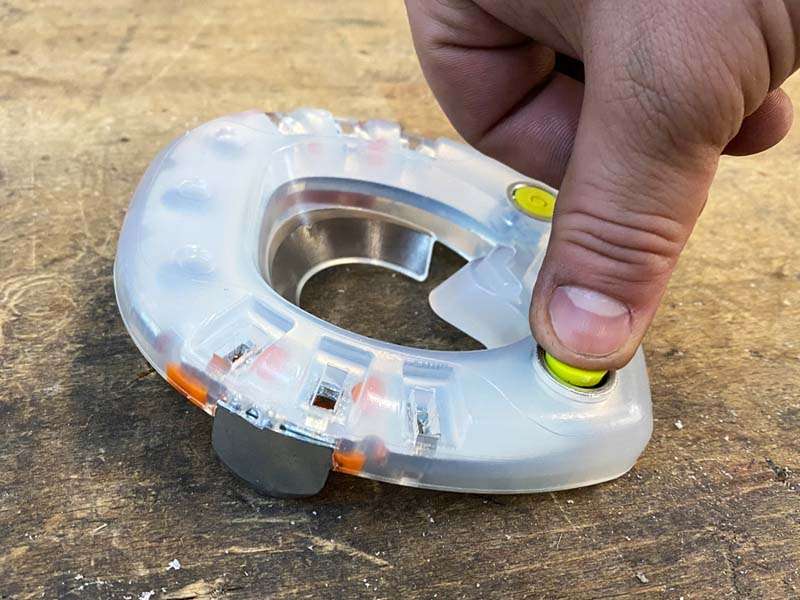
2
To remove the plastic plug, use a pointed object such as needle-nose pliers or flat-blade screwdriver.
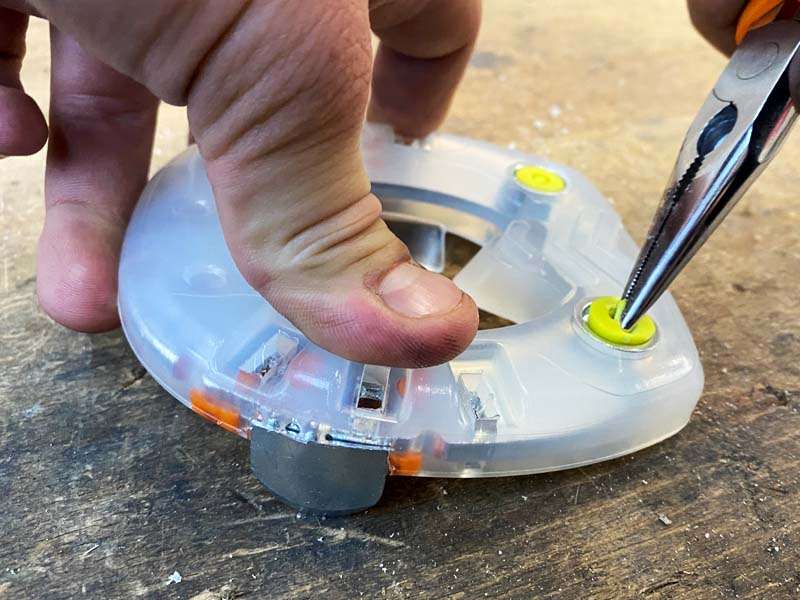
Product Features
| Modell | Studs for grip in extreme situations |
|---|---|
| Brand | Duplo |
| Aricle Number | 001210, 001211, 001212, 001220, 001221, 001222, 001230, 001231, 001232, 001240, 001241, 001242, 001250, 001251, 001261, 001265, 001266, 001270, 001271, 001310, 001311, 001320, 001321, 001330, 001331 |
| Produced in | Germany |
| Function | screw studs, additional grip, winter shoeing, additional anti-skid protection, regular stud change |
| Riding Styles and Disciplines | a.o. eventing, hunting, show jumping or driving |
| Stud Thread | not self-tapping and self-tapping version |
| Stud Shape | hexagonal and conical |
| Stud Change | possible |
| Placeholder | stud blanks or plastic plugs The placeholders keep the thread clean. This makes it easier to screw in the stud and ensures the stability of the threaded insert. If dirt is repeatedly pushed into the threaded hole, it can lead to unwanted pressure being exerted on the hoof. |
| Stud Height | not self-tapping: 6mm, 8mm, 12mm self-tapping: 8mm, 12mm, 14mm (only Ice-Studs) |
| Effective Height | not self-tapping: 3mm, 5mm, 9mm self-tapping: 5mm, 9mm, 11mm (only Ice-Studs) |
| Thread Size | M8, M10, M12, M14 - depends on the stud version |
| Matching Composite Horseshoes | Please note that the thread size depends on the size of the horseshoe.
Jumper - Clipped, Straight Bar Shoe with two or four stable thread inserts (depends on the shape of the horseshoe) HDS Traction - Clipped, Straight Bar Shoe with four stable thread inserts Special case: Open-Toed Horseshoe - Clipped with two stable thread inserts in the heel area; (we recommend to only use the 6mm or 8mm studs) |
| Application | At your own discretion, adapted to ground conditions, riding discipline and safety in the herd |
| Risk of Injury | The use of studs increases the risk of injury. We cannot accept liability for any damage that may occur. Please read and follow our safety instructions. Safety instructions can be found under FAQ → Safety instructions. |
| Safety Information | can be found under FAQ → Safety instructions |
| Packaging Unit | by the piece |
| Shipment | within Canada — for worldwide shipments please contact the Duplo Team in Germany |
